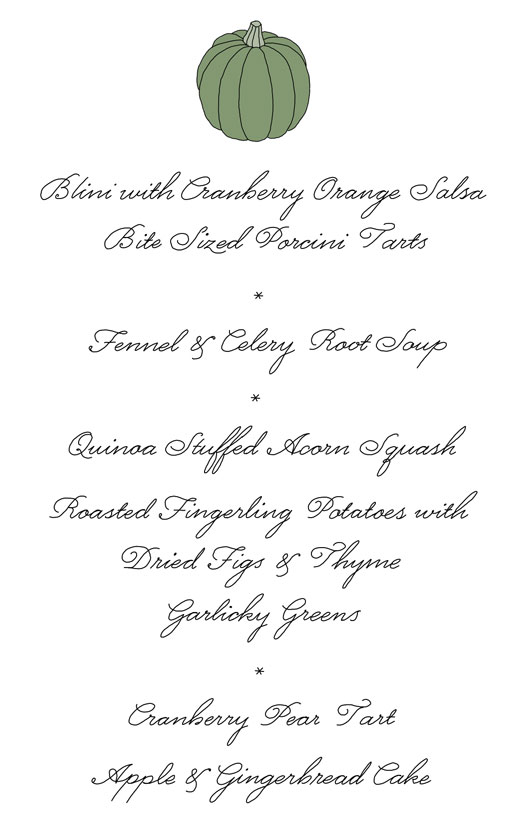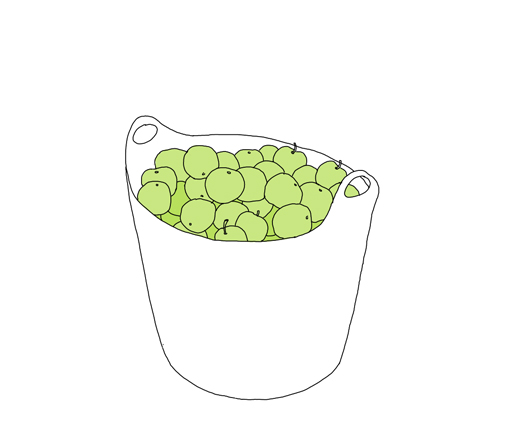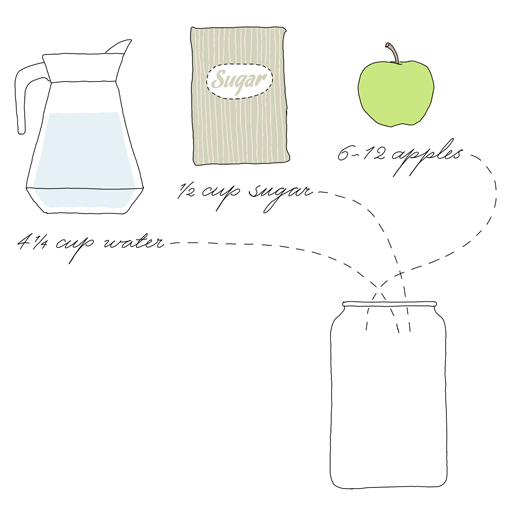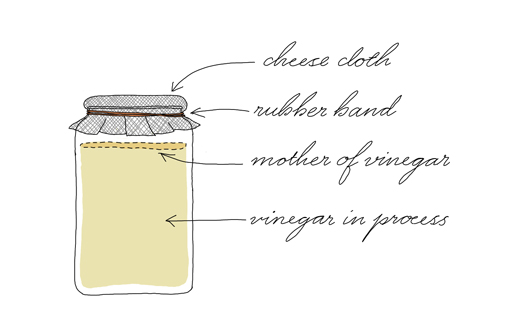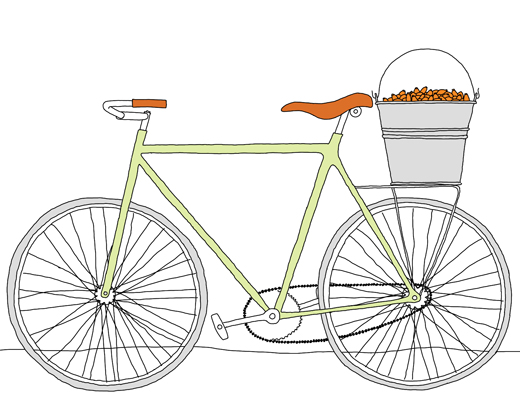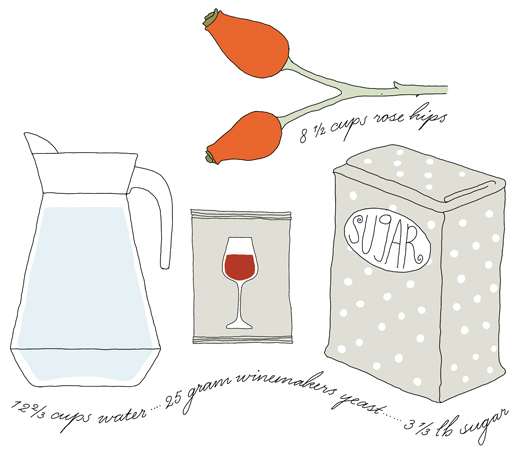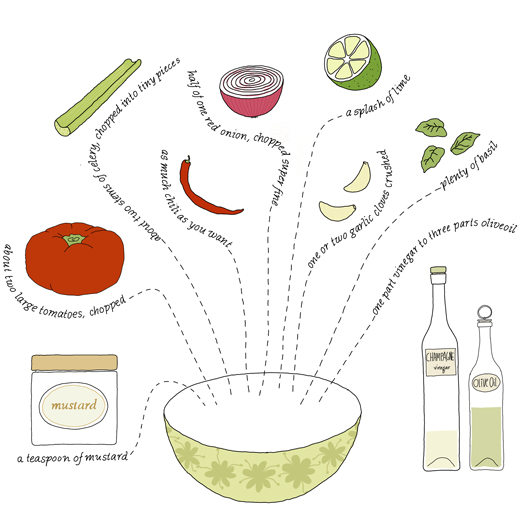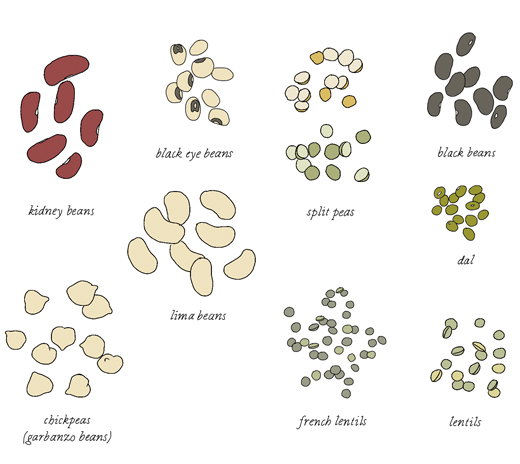
It may be silly to suggest cooking dried legumes when you can get them ready to eat in a can. But I still insist that there are so many benefits to cooking them yourself that it’s worth every step. And it’s pretty easy to do. You can also cook large quantities at a time and store smaller portions in your freezer.
Legumes like lentils or beans work all year round in different ways. Cold in salads and warm as a side to eggs, beets or with any green vegetable. Chickpeas are wonderful as a starter together with toasted almonds. Green lentils with beets, feta and parsley create a simple and delicious salad alone or together with baked vegetables or meat. Hummus or any other dip (see below) are perfect treats and easy to whip up with any fresh produce that the summer can provide.
I always cook my legumes together with some herbs, vegetables and salt (see simple version below). Sometimes I add bones or small pieces of meat when cooking the legumes. It gives a specific flavor but it’s far from necessary. Cooking time depends on what type of legumes you have, for example cooking lentils is far quicker than chickpeas. It also depends what you are planning to do. If you are making hummus you may want to cook the chickpeas until they are almost mushy but for a salad they should just be soft.
Some legumes such as most beans and chickpeas you will need to soak for at least 8-10 hours (but longer is better). Change the water a couple of time to keep them fresh (it can smell really bad). Lentils, split peas and mung beans do not need soaking.
The lentil dip below can be served together with fresh vegetables such as raw carrots, cucumber and celery. Slightly cooked cauliflower and broccoli also work well. You can also use the dip as a spread on freshly baked bread and crackers. Enjoy!
lentil dip
(Plenty of dip)
one cup dried french lentils (almost 2 cups cooked)
1-2 bay leaves
A sprig of sage
½ onion (and/or other vegetable scraps such as carrot, celery or fresh fennel)
about one tablespoon of salt
for the dip
about 2 cups cooked lentils (as above)
one shallot
chili (more or less depending on how spicy you want it)
2-3 garlic cloves
2 teaspoon coriander*
2 teaspoons cumin*
one teaspoon fennel*
reserved lentil liquid
juice from a ½ lime
seasoning
smoked paprika powder (e.g. bittersweet Pimentón de la Vera)
sea salt
some olive oil
cilantro
First step is to cook the lentils. Rinse the lentils and cook them gently together with about two cups water, bay leaves, sage, salt and onion (etc) until soft (about 15-20 min). You may need to add a little more water. It’s important that you don’t cook the lentils dry and there should be about a cup of tasty liquid left when the lentils are done. When done reserve the liquid as it will be used later. Let the lentils cool and remove all bits and pieces of the sage, bay leaves, onions etc.
Chop the shallot into tiny pieces. Saute on very low heat until it starts to caramelize. Raise the temperature a little and add chili together with the spices. Stir everything together and add the lentils to the pan. Poor some of the water over and let cook for just a little bit. (You could stop the cooking here and just enjoy the lentils as a side to eggs, meat or vegetables).
Let the lentils cool a little before blending together with garlic in a food processor. Add lime juice plus some of the reserved lentil liquid to create a smooth texture. Season with flakes of sea salt and smoked paprika powder. Lastly add as much cilantro as you wish. Just before serving add some olive oil and a splash on top.
* I prefer to toast whole coriander, fennel and cumin in a skillet at high heat. When they start to “pop” remove them immediately from the pan into a mortar and pestle. Grind until fine. The flavor will be richer.
This article was originally published at EcoSalon on 10 July 2012.

